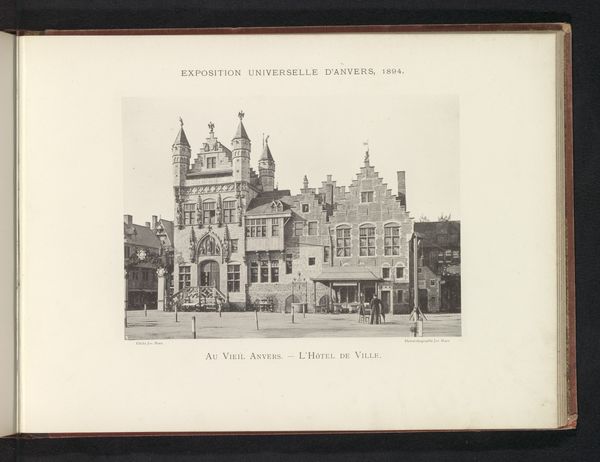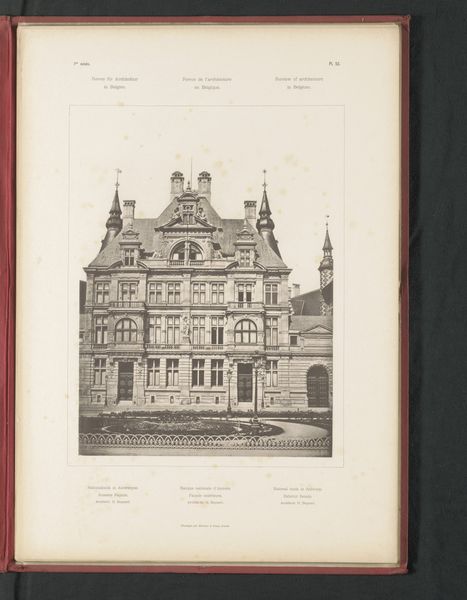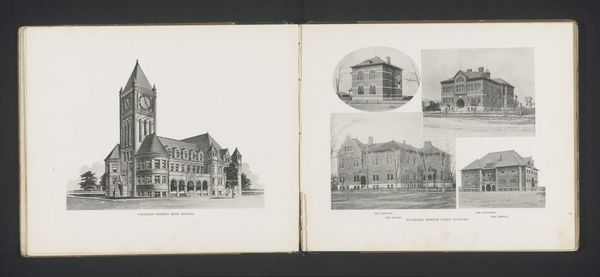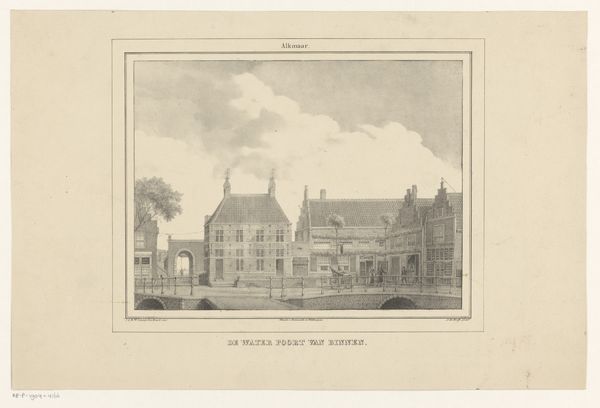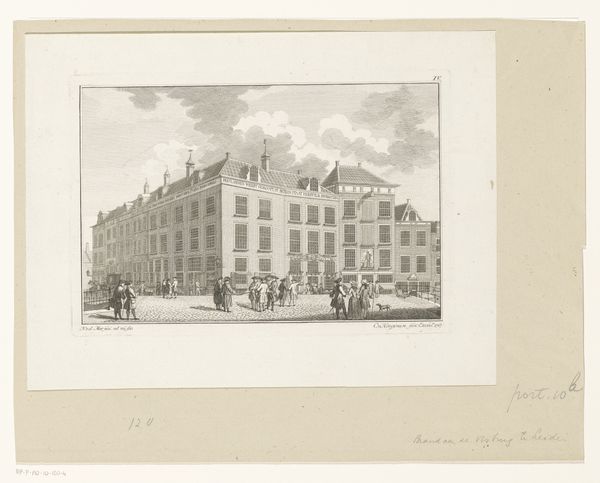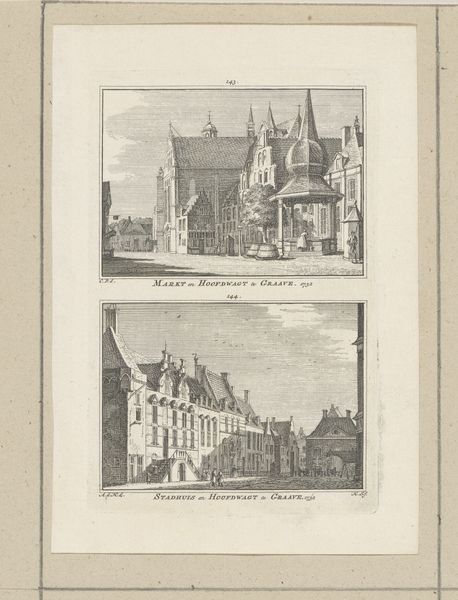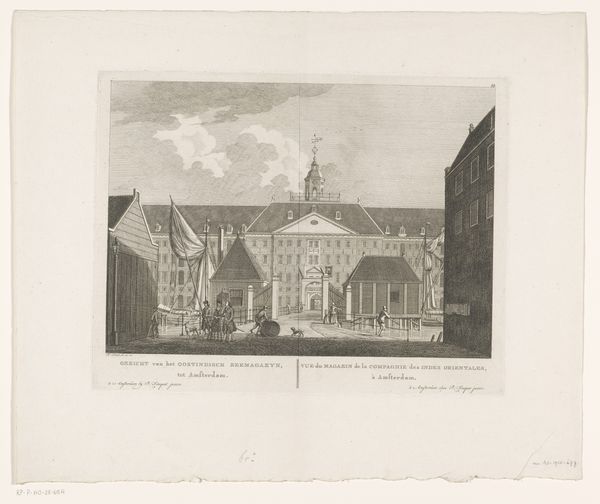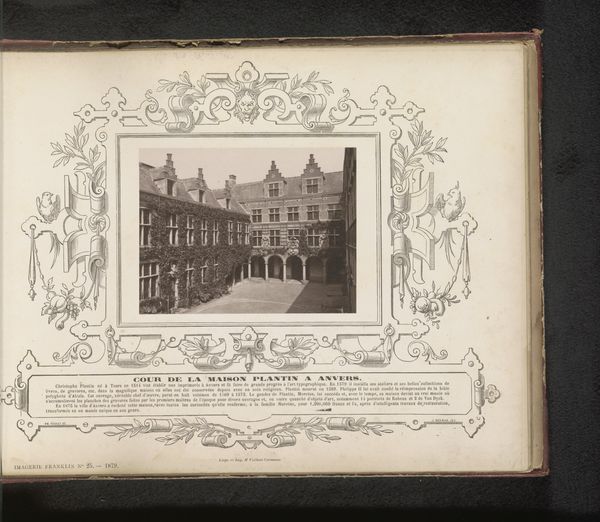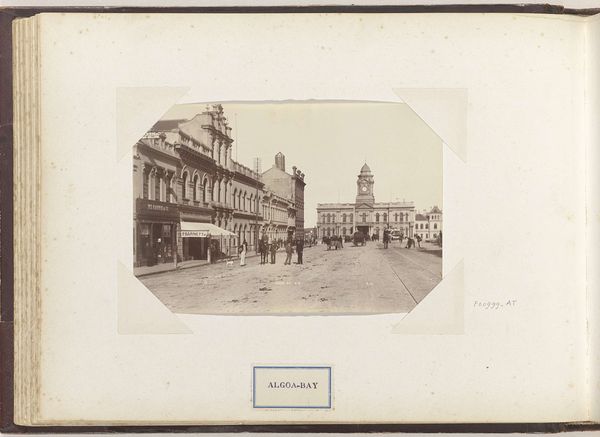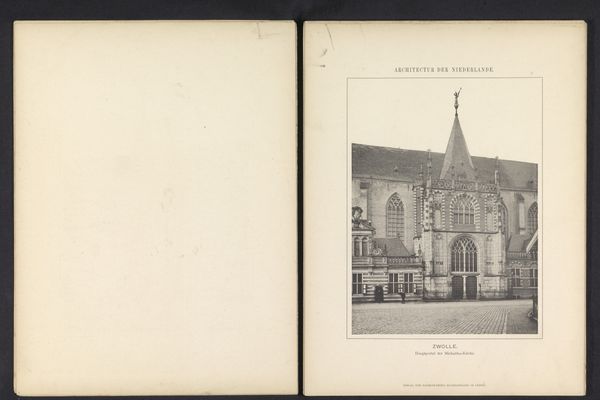
print, photography
# print
#
landscape
#
photography
#
coloured pencil
#
cityscape
#
realism
Dimensions: height 160 mm, width 220 mm
Copyright: Rijks Museum: Open Domain
Editor: We're looking at "Gezicht op de Grote Markt te Antwerpen," a photograph by Th. Lantin taken before 1894. It presents a classic cityscape, rendered in monochromatic tones. I'm immediately struck by the imposing architectural facades that seem to define the space. What stands out to you in terms of its formal qualities? Curator: Indeed. Immediately apparent is the meticulous arrangement of visual elements. Note the horizontal stratification – the ground plane, the building facades, and the sky each occupying distinct registers. Observe, too, the play of light and shadow, which serves not only to define form, but to articulate the materiality of the structures. The variations in tone invite the viewer to decipher a spatial hierarchy, almost as if attempting to define the foreground from background within a tapestry of gray and black hues. What might one gather, structurally, about the buildings by examining how their shapes integrate with one another within the photograph's frame? Editor: I notice how the details diminish with distance, emphasizing the depth of field. The textures of the buildings are sharpest at the bottom, adding to the sense of a deep and lived-in space. The building furthest from our viewpoint loses definition – like the eye can’t penetrate it. Curator: Precisely. How does this controlled distribution of detail guide the eye? Consider also the repetition of rectangular forms - windows, doors, architectural details. What compositional rhythm do these repeated motifs create? What happens to our interpretation, would you say, if we eliminated, in thought, that particular repetition? Editor: The repetition almost seems to offer stability, like each piece carefully balances the one beside it. By taking that away, the whole composition would feel chaotic, perhaps too abstract? I appreciate how your questions make me view even a realistic piece such as this one from a more design-oriented perspective. Curator: Indeed, exploring the architecture of a work unveils how, paradoxically, its constraints can elevate meaning, whether explicitly symbolic or tacitly suggestive.
Comments
No comments
Be the first to comment and join the conversation on the ultimate creative platform.

